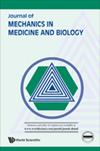基于深度学习框架的慢性阻塞性肺疾病康复运动评估
IF 0.6
4区 医学
Q4 BIOPHYSICS
引用次数: 0
摘要
慢性阻塞性肺疾病(Chronic obstructive pulmonary disease, COPD)是一种以气流受限为特征的不可逆疾病,具有不同程度的可逆性损害,发病率和死亡率都很高。值得注意的是,慢性阻塞性肺病无法治愈,其治疗主要依靠康复锻炼来改善气流限制。本文提出了一种基于视觉的康复训练效果预测系统,用于评估COPD患者康复训练的效果。利用摄像机拍摄COPD患者的康复训练视频,并采集各项身体指标。此外,我们使用聚类算法对不同康复效果的患者进行分类,进行后续进展分析。我们的模型实现了90.6%的康复进度分类准确率,可以在没有医生监督的情况下有效获得良好的康复训练效果。这对于帮助COPD患者在单独训练时获得有效的反馈有意义。本文章由计算机程序翻译,如有差异,请以英文原文为准。
A deep learning framework-based exercise assessment for rehabilitation of chronic obstructive pulmonary disease
Chronic obstructive pulmonary disease (COPD), which has a high prevalence and mortality rate, is an irreversible condition marked by airflow restriction with different degrees of reversible damage. Notably, there is no cure for COPD, whose treatment primarily relies on rehabilitation exercises to improve airflow limitation. In this paper, a vision-based rehabilitation exercise efficacy prediction system is proposed to assess the efficacy of rehabilitation training for COPD patients. A camera was utilized to capture rehabilitation training videos of COPD patients, and we also collected various physical indicators. In addition, we used clustering algorithm to divide patients with different rehabilitation effects for subsequent progression analysis. Our model achieved a classification of rehabilitation progress accuracy of 90.6%, making it possible to effectively obtain favorable rehabilitation training results without physician supervision. It was meaningful for helping COPD patients get effective feedback when training alone.
求助全文
通过发布文献求助,成功后即可免费获取论文全文。
去求助
来源期刊

Journal of Mechanics in Medicine and Biology
工程技术-工程:生物医学
CiteScore
1.20
自引率
12.50%
发文量
144
审稿时长
2.3 months
期刊介绍:
This journal has as its objective the publication and dissemination of original research (even for "revolutionary concepts that contrast with existing theories" & "hypothesis") in all fields of engineering-mechanics that includes mechanisms, processes, bio-sensors and bio-devices in medicine, biology and healthcare. The journal publishes original papers in English which contribute to an understanding of biomedical engineering and science at a nano- to macro-scale or an improvement of the methods and techniques of medical, biological and clinical treatment by the application of advanced high technology.
Journal''s Research Scopes/Topics Covered (but not limited to):
Artificial Organs, Biomechanics of Organs.
Biofluid Mechanics, Biorheology, Blood Flow Measurement Techniques, Microcirculation, Hemodynamics.
Bioheat Transfer and Mass Transport, Nano Heat Transfer.
Biomaterials.
Biomechanics & Modeling of Cell and Molecular.
Biomedical Instrumentation and BioSensors that implicate ''human mechanics'' in details.
Biomedical Signal Processing Techniques that implicate ''human mechanics'' in details.
Bio-Microelectromechanical Systems, Microfluidics.
Bio-Nanotechnology and Clinical Application.
Bird and Insect Aerodynamics.
Cardiovascular/Cardiac mechanics.
Cardiovascular Systems Physiology/Engineering.
Cellular and Tissue Mechanics/Engineering.
Computational Biomechanics/Physiological Modelling, Systems Physiology.
Clinical Biomechanics.
Hearing Mechanics.
Human Movement and Animal Locomotion.
Implant Design and Mechanics.
Mathematical modeling.
Mechanobiology of Diseases.
Mechanics of Medical Robotics.
Muscle/Neuromuscular/Musculoskeletal Mechanics and Engineering.
Neural- & Neuro-Behavioral Engineering.
Orthopedic Biomechanics.
Reproductive and Urogynecological Mechanics.
Respiratory System Engineering...
 求助内容:
求助内容: 应助结果提醒方式:
应助结果提醒方式:


